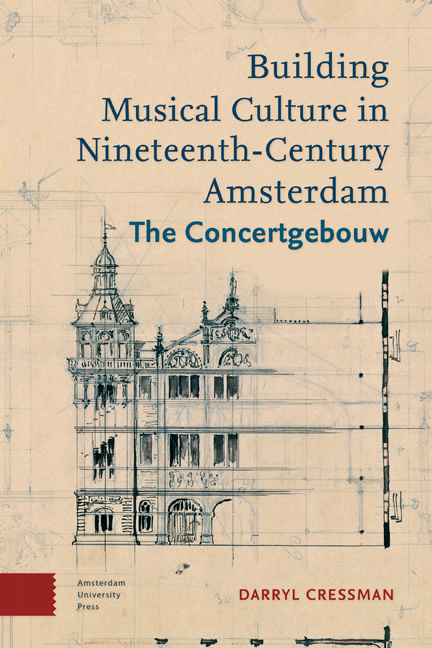Book contents
- Frontmatter
- Contents
- List of Illustrations
- Acknowledgements
- Dedication
- 1 The Concert Hall as a Medium of Musical Culture
- 2 Listening, Attentive Listening, and Musical Meaning
- 3 Patronage, Class, and Buildings for Music: Aristocratic Opera Houses and Bourgeois Concert Halls
- 4 Acoustic Architecture before Science : Designing the Sound of the Concertgebouw
- 5 Frisia Non Cantat: The Unmusicality of the Dutch
- 6 Listening to Media History
- Works Cited
- Index of Names
- Index of Subjects
6 - Listening to Media History
Published online by Cambridge University Press: 10 December 2020
- Frontmatter
- Contents
- List of Illustrations
- Acknowledgements
- Dedication
- 1 The Concert Hall as a Medium of Musical Culture
- 2 Listening, Attentive Listening, and Musical Meaning
- 3 Patronage, Class, and Buildings for Music: Aristocratic Opera Houses and Bourgeois Concert Halls
- 4 Acoustic Architecture before Science : Designing the Sound of the Concertgebouw
- 5 Frisia Non Cantat: The Unmusicality of the Dutch
- 6 Listening to Media History
- Works Cited
- Index of Names
- Index of Subjects
Summary
If at some later point, instead of doing a ‘history of ideas’, one were to read the state of the cultural spirit [Geist] off of the sundial of human technology, then the prehistory of gramophone could take on an importance that might eclipse that of many a famous composer.
Media History and the History of Musical Culture
Prior to any sort of architectural or artistic significance, concert halls are musical media on par with other objects and technologies such as recorded music and instruments. Like these media, concert halls are the a priori of music's performance, composition, and reception. In the late nineteenth century, the meaning of the Concertgebouw was debated in the pages of an Amsterdam newspaper. At issue was what type of musical culture the Concertgebouw was going to mediate. Was it to be a venue for serious musical culture or was it to be a home for the more gezellig musical cultures that could be found in other venues throughout the city? For some, the conviviality typical of Amsterdam's orchestral concert tradition should influence the function and meaning of the buildings where concerts are held. From this perspective, buildings for music are neutral conduits that become defined through established musical practices and traditions. Other music lovers disagreed. The function and meaning of the concert hall is not malleable: a concert hall is purpose built for a musical culture that includes the belief that secular instrumental music, and in particular the symphony, is a serious art form capable of moments of aesthetic transcendence, and that audiences should demonstrate their reverence for these works of art through silent attentive listening.
The history of the Concertgebouw that I have presented can be read as arguing that the latter opinion prevailed because the Concertgebouw was the culmination of decades-long efforts made by patrons, critics, and music lovers to elevate Amsterdam's musical culture to the level of classical musical capitals like Leipzig and Vienna. Audiences were culturally prepared for the aural and aesthetic expectations that were presupposed in the design of the Concertgebouw, although these expectations were not completely congruent with Amsterdam's existing orchestral music tradition.
- Type
- Chapter
- Information
- Building Musical Culture in Nineteenth-Century AmsterdamThe Concertgebouw, pp. 141 - 158Publisher: Amsterdam University PressPrint publication year: 2016



